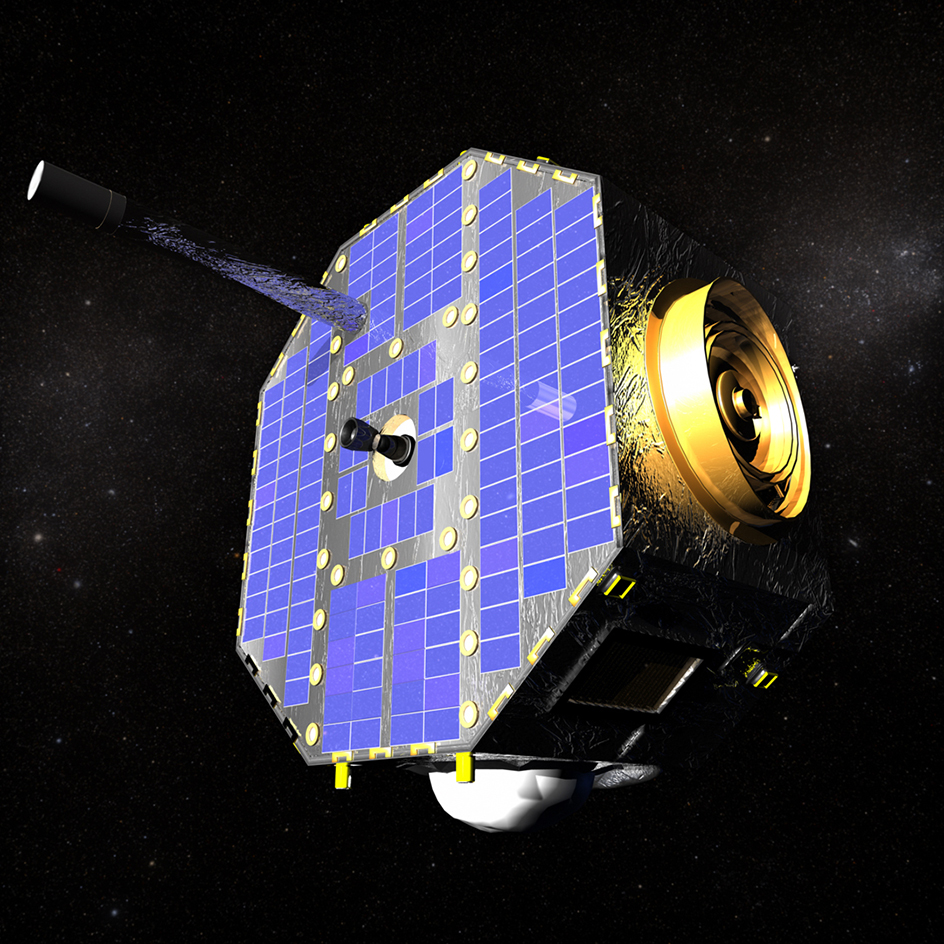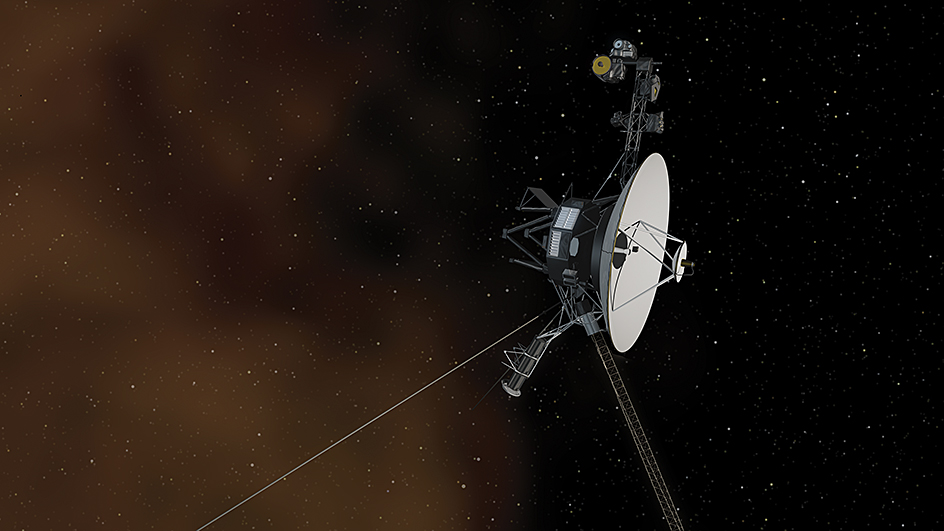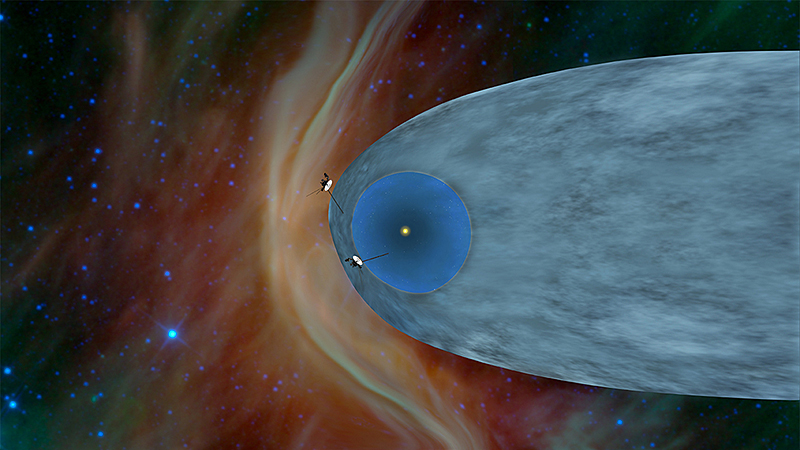Heliosphere is a vast, teardrop-shaped region of space containing electrically charged particles given off by the sun. The sun and all the planets are inside the heliosphere. Scientists estimate that the nose (blunt end) of the heliosphere is about 9 billion to 15 billion miles (15 billion to 24 billion kilometers) from the sun. This distance is two to three times the greatest distance from the sun to Pluto. The tail of the heliosphere trails off at an even greater distance on the other side of the sun.

The sun and the heliosphere are traveling together—nose first—through a cloud in interstellar space (space between the stars). This cloud is a concentrated mass of the interstellar medium, dust and gas that occupy interstellar space. The heliosphere travels through the medium at about 16 miles (25 kilometers) per second.
Solar wind.
The sun gives off a continuous flow of particles, especially hydrogen ions (charged atoms), which have a positive electrical charge, and electrons, which are negatively charged, called the solar wind. It flows away from the sun at about 125 to 625 miles (200 to 1,000 kilometers) per second.

Shock waves.
Due to the movement of the sun and heliosphere, the interstellar cloud and the solar wind push against each other. The amount of pressure exerted by the wind can vary, and the regions of greatest pressure can change their locations. Occasionally, large outbursts of material from the sun, called coronal mass ejections, create ripples in the wind. The solar wind’s pressure decreases as the wind expands into space.
The solar wind travels at a constant speed much faster than the speed of sound. However, as it approaches the edge of the heliosphere, the particles begin to encounter increasing resistance from the interstellar medium. When the particles fall below the speed of sound in the charged solar wind they produce a shock wave called the termination shock. Even farther out, in a region called the heliosheath, the wind slows still more. Finally, the wind stops its outward flow at the heliopause, the end of the heliosphere. 
There may also be a shock wave in the interstellar cloud in front of the heliopause. This kind of wave is called a bow shock because it resembles a wave made by the bow of a ship moving on the surface of the water.
At the heliopause, particles in the solar wind reach a point of equal pressure with the interstellar medium. There, neutral particles in the interstellar medium collide with charged particles in the solar wind, causing them to lose their electric charge. This interaction produces energetic neutral atoms that mark the edge of the solar system.
Magnetic field.
The flow of charged particles within and around the sun produces a magnetic field. The flow of the solar wind extends the sun’s magnetic field into space, forming the heliospheric magnetic field.
The heliospheric magnetic field helps prevent most particles from entering or leaving the heliosphere. There are three major exceptions: (1) bits of material called cosmic dust grains; (2) some electrically charged, high-energy particles called cosmic rays; and (3) interstellar neutrals, electrically neutral atoms. Some neutrals interact with the solar wind to become cosmic rays.
Probing the heliosphere.
Scientists measured the distance to the termination shock using the two NASA Voyager space probes, launched in 1977. Voyager 1 crossed the termination shock in December 2004, at a distance of about 9 billion miles (15 billion kilometers) from the sun. Voyager 2 made this crossing in August 2007, at about 8 billion miles (13 billion kilometers). In 2012, Voyager 1 became the first spacecraft to fly beyond the heliosphere and enter interstellar space. Voyager 2 exited the heliosphere in 2018.

The NASA space probe IBEX, launched in 2008, made the first images of the band of energetic neutral atoms that marks the edge of the solar system. The NASA probe Cassini, launched in 1997, also mapped the heliosphere. Data from IBEX and Cassini have enabled scientists to create the first comprehensive sky map of the particles created by interactions between the solar wind and the interstellar medium.
